A Complete Guide to Building a Brand Identity
Author :
- What is Brand Identity?
- The Importance of Brand Identity
- What’s the Difference Between Brand Identity and Brand Image?
- How Brand Identity Compares With Brand Equity
- Key Elements of a Good Brand Identity
- How Your Brand Identity Should Be
- How to Create a Brand Identity
- 3 Brand Identity Best Practices Your Brand Needs to Follow
- 4 Inspiring Brand Identity Examples to Take Notes From
- Get Started With Artisticore to Craft a Brand Identity that Lasts
Whenever you think of a brand, there will always be an associated feeling with it, whether that is excitement, trust, intrigue, or even other feelings.
That’s the beauty of brand identity. The feeling is based on things more than the logo or catchy name it has. But instead it’s about the story, voice, and values it represents, all of which take time to develop.
This ability to draw a sense of feeling from a brand, and the emotional connection a person has with that brand, is what brand identity is all about.
As Steve Forbes, editor-in-chief of Forbes magazine, famously put it, “Your brand is the single most important investment you can make in your business.” And he’s spot on with that one.
You should never compromise on your brand because it decides how the world sees you. But what is brand identity all about? More so, how important is brand identity for your brand?
To find out all the answers, we will talk about brand identity in this blog. More so, we will look at how you can create a brand corporate identity for your band.
So, without any further ado, let’s get right into it.
What is Brand Identity?
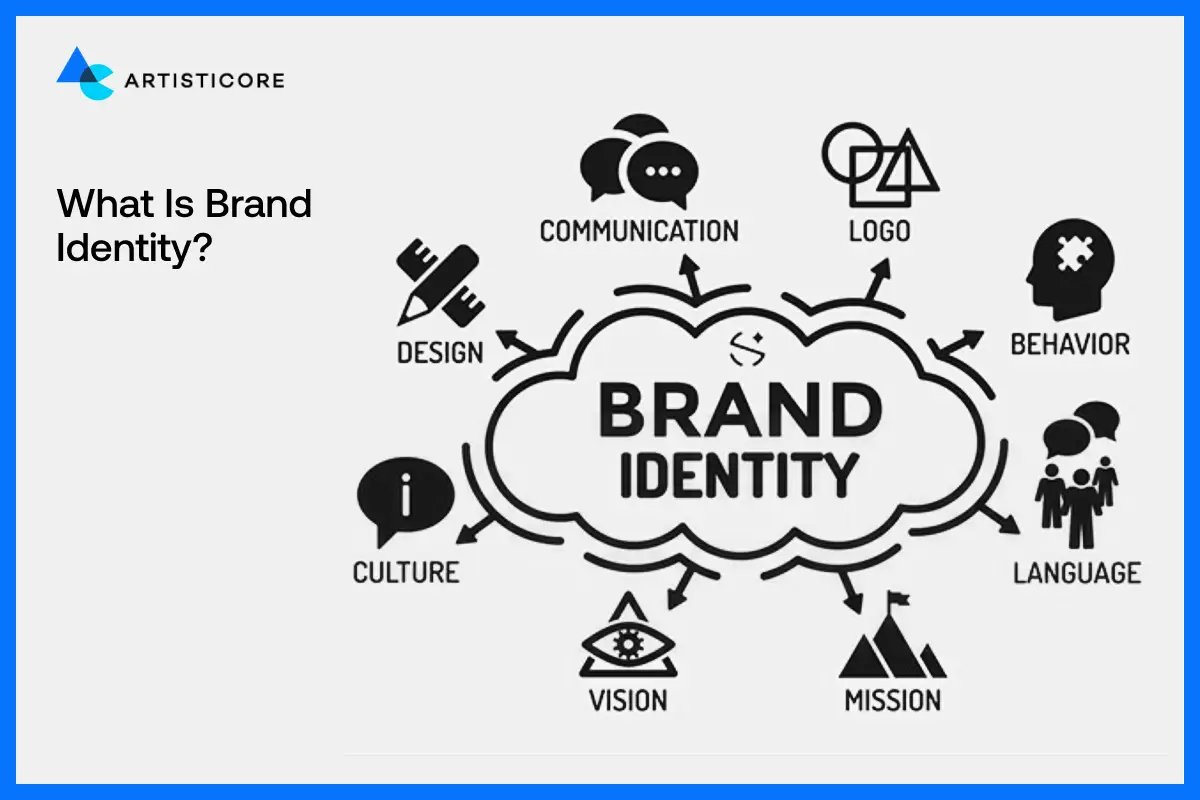
Let’s first address the elephant in the room: what is the brand identity? In simple terms, brand identity is best defined as the manner in which your brand is seen, heard, and felt by the world.
It is the combination of visually appealing and emotional that creates recognition not only for your organization as a whole but also for your individual offerings; your logo, colors, fonts, tone, and personality that blend together.
Thus, it is your brand’s “face” and “voice.” It allows your brand to shine in a crowded market of brands. Your distinctness will be the reason for you to be easily recognized by people.
It is the same as people having their own unique style and personality, and how they communicate.
Brand identity allows your business to represent things and builds connections with your audience. Ultimately, it starts documenting the story of your business without saying too much.
A strong brand identity builds trust, creates associations, and aids in recall for your target audience for all of the right reasons.
Ready to Build a Brand that Represents Your Business? Let Artisticore Turn Your Vision into a Brand Identity that Lasts.
The Importance of Brand Identity
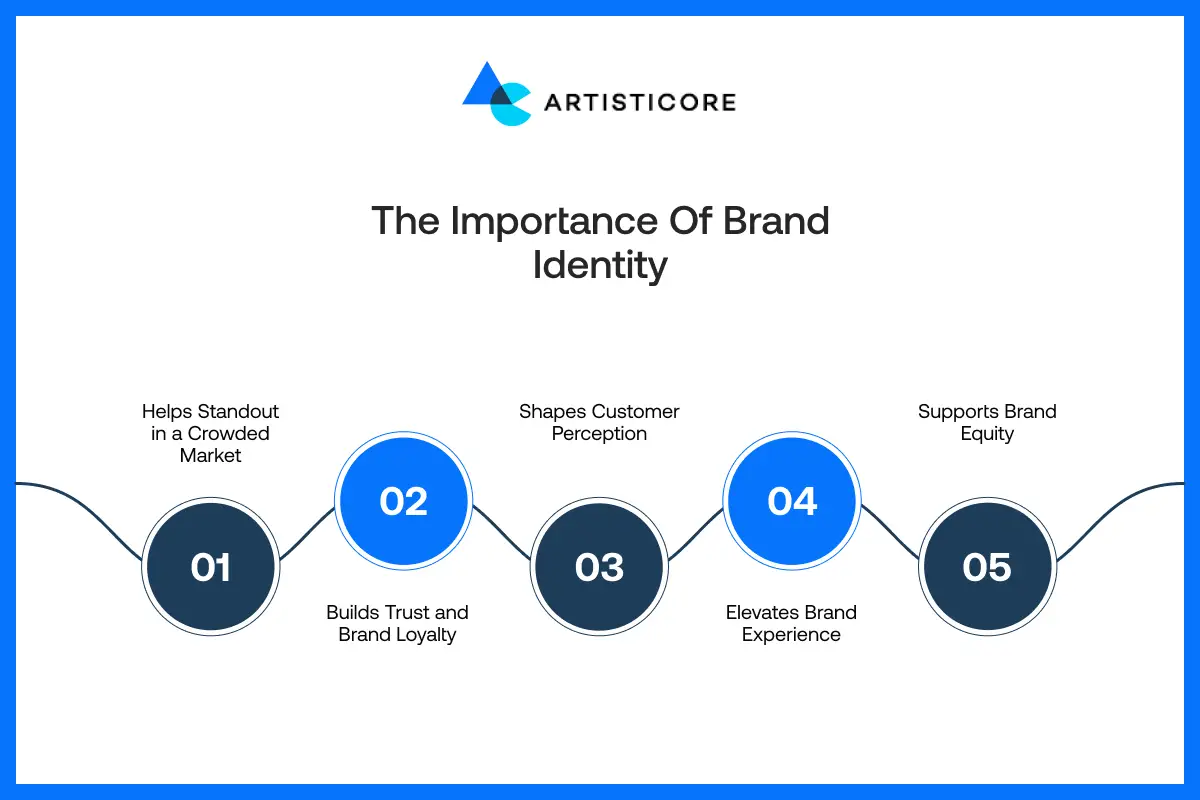
Your brand identity isn’t just about look; it’s your secret weapon to connect, impress, and grow. Here’s why having the best brand identities matters more than you might think.
Helps Standout in a Crowded Market
In a sea of brands and a crowded market, where every brand is after the same audience as you, standing out is a must. You will need to do so with your designing and branding. Having the best brand identity helps you separate yourself from others.
With your best brand designs, visuals, voice, and story being unique, people will be able to remember you. It’s the reason why customers will choose you over others.
All the visual identity elements of your brand, whether your logo, colors, or tagline, will help support your brand to stand out with the best brand design in a busy marketplace.
Builds Trust and Brand Loyalty
Consistency creates trust, and trust makes way for loyalty. When your corporate identity design is the same in all places, people start to put their trust in you.
Gradually, that recognition attains loyalty. Clientele are at ease coming back, as they are aware of the good quality and service provided by your brand.
Shapes Customer Perception
Brand identity is the silent yet powerful statement about yourself, even before you speak. The color palette, fonts, and images tell stories of you and your character. A fun brand identity might appeal to young people.
On the other hand, a modern one might appeal to business pros. So, all in all, your brand identity is how others look at your brand.
Elevates Brand Experience
The customer experience is taken up a notch through a brand identity. More so, the customer’s experience stays the same when they are visiting your site or buying your product, for that matter.
This feeling of being in the same boat creates confidence in your company. Your brand creates an ecosystem. And therefore, the customer has a better experience with it.
Supports Brand Equity
Brand equity is the value of your brand for the target customer. A good brand identity often comes with brand equity due to the favorable associations. If people look at your brand as professional, they will think of it as trustworthy.
More so, they will think it belongs to the premium quality category. So, even by keeping higher prices, you can have a wider audience than your competitors.
What’s the Difference Between Brand Identity and Brand Image?
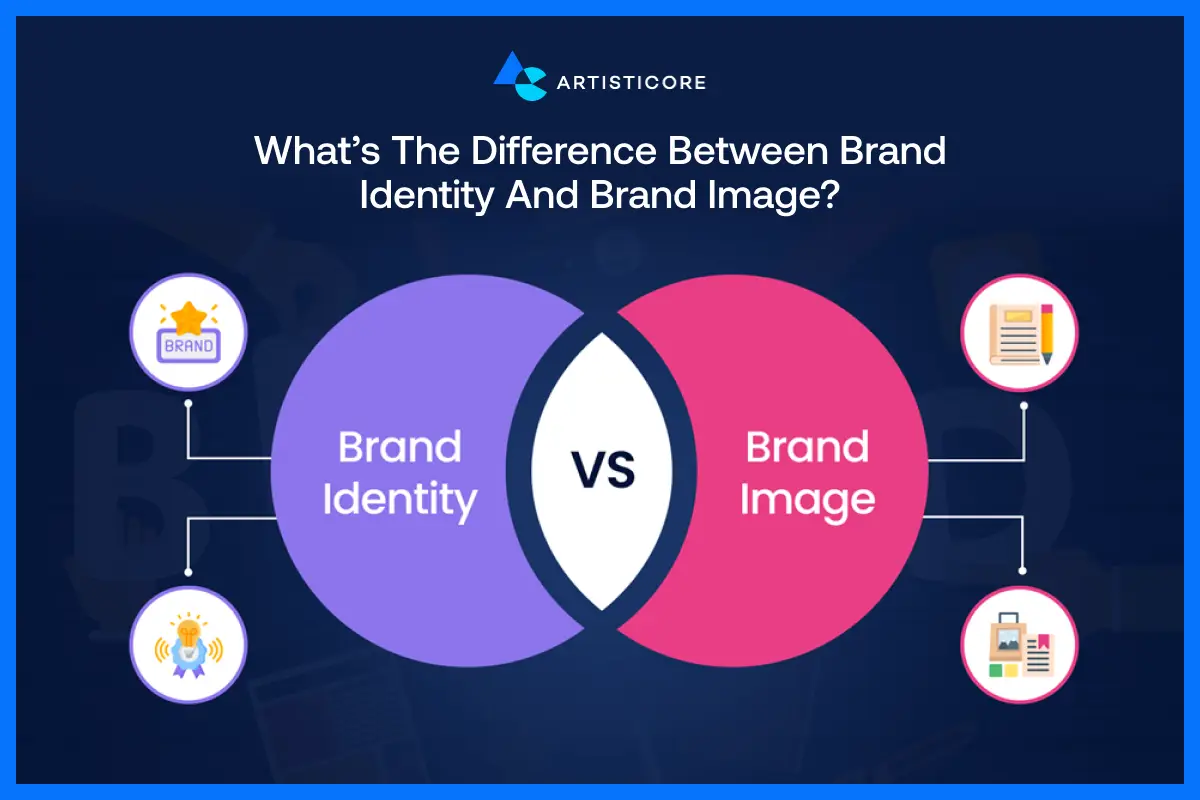
A brand identity is everything you deliberate upon, including your logo, colors, tone, and overall personality. Brand identity is how you wish for people to think about your brand.
On the other hand, customer perception of the brand is the main factor for your brand image, which is built through their individual experiences with you.
To put it best, identity is what you create and image is what others form of you.
When both brand identity and brand image work together, your brand ticks. It becomes trustworthy and reliable, which fosters customer relationships.
Here’s an overview of brand identity vs brand image:
| Brand Identity | Brand Image |
| It’s how a company defines and presents itself to the audience. | It’s how the audience perceives and interprets the brand. |
| Created through visuals, messaging, tone, and design. | Formed through customer experiences, opinions, and emotions. |
| Controlled by the business. | Shaped by the audience. |
| Focuses on what the brand wants to communicate. | Focuses on what people actually think or feel. |
| Built through intentional design and strategy. | Built through customer interactions and brand reputation. |
| Can be changed or updated by the brand anytime. | Takes time to change since it depends on public perception. |
How Brand Identity Compares With Brand Equity
Brand identity and brand equity are linked but distinct concepts that need to be acknowledged. Brand identity deals with your brand’s visual, auditory, and tactile experiences.
It is almost like the artistic part of the initial impressions of the brand. Brand equity, on the other hand, is the value a brand earns over time based on trust, recognition, and loyal customers. A strong and consistent brand identity can help contribute to brand equity.
That is because customers tend to remember and respect your brand, and then make a choice to buy it more often, resulting in greater value in the long run.
Key Elements of a Good Brand Identity
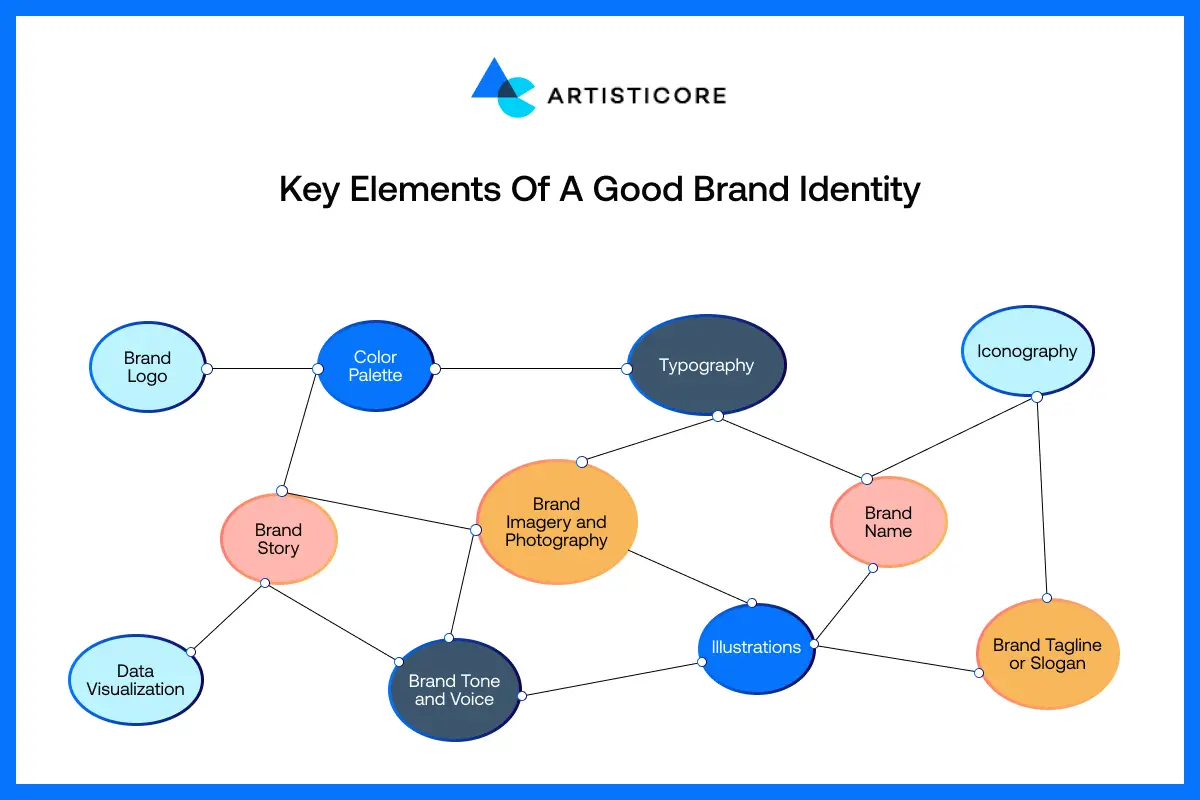
A strong brand identity is built from many pieces working together. Each branding design elements adds personality and brand design meaning, helping your brand stand out and connect deeply with people.
Brand Logo
A brand logo is the heart of brand identity. It is the first thing people see and remember about your brand.
A good logo is memorable, and above all, clear. It must also represent the essence of your brand. The logo can be a symbol, a wordmark, or a mix of both, for that matter.
Your logo has to be versatile to be appealing in all types of places, whether it is online or in physical form. After all, what is brand design without a logo? It’s nothing, right?
Color Palette
The colors of a brand are what make the brand identity great. Brands consider color psychology when choosing the colors for their brand identity.
Different colors have different meanings. The blue color means trustworthiness.
On the other hand, the red color means fierceness and power. More so, green means a brand is environmentally friendly.
Applying the same color scheme to all platforms will give your brand a recognizable image. Therefore, you must choose colors that are in line with your brand’s message and visuals.
Typography
Typography establishes your brand’s tone through writing. The fonts you select can present your brand as fun, serious, contemporary, or traditional.
Using the same fonts will help you create a professional brand. Always choose fonts that are readable. More so, make sure they align with your brand’s image so your message is always right.
Brand Imagery and Photography
Brand graphic design is not just a means of communicating your brand’s story; they are also the most powerful way to do it.
Through branding in graphic design and images, you can communicate your values and also the feelings that a customer should have when using your products.
Brand lifestyle photography, product images, and team pictures should all be executed in a tone that resonates with your brand and creates a charm of sorts around the audience.
Illustrations
If someone wants to know what is branding in graphic design, then illustrations are the identity graphic.
Corporate identity graphic design is capable of making your brand stand out and, at the same time, giving it a more creative and human-like character.
More so, visual identity graphic design is a great way to convey difficult ideas in a very simple way and to attract attention.
And no matter if you apply a graphic design brand to your website, packaging, or promotional material, the graphic design brand design will give your brand a distinctiveness that is both friendly and unforgettable.
It is only a matter of keeping the style of brand identity graphic design uniform in all aspects of the brand.
Brand Name
Your brand name is where it all starts! It’s your identity base and among the early memories people associate with your company.
An excellent name is short, effortless to pronounce, and most importantly, it should have meaning.
Your brand name needs to show what your brand stands for – it needs to feel correct for your target audience.
Brand Tone and Voice
Tone and voice of the brand are the factors that determine the “speaking” method of the brand to the audience.
If you are warm, serious, or humorous, make sure you are always the same. A distinctive brand voice can be heard through the customer experience of familiarity with the message.
Thus, it will be easier for the audience to recognize and trust the brand. It is not only through the content that the brand is made, but also through the way of presentation.
Brand Story
A strong brand will have a story about itself. It will reveal its origin, values, and reasons for coming into existence. An excellent brand story establishes a strong bond with your audience.
More so, it provides your brand with a goal and mission. It allows people to understand what you do and why you do it.
Brand Tagline or Slogan
A brand tagline or slogan is its way of making a statement. The slogan is a short copy of your brand message. It is a catchy phrase that is easy to remember. Think of slogans like Nike’s “Just Do It” or PlayStation’s “Play Has No Limits”, for that matter.
A great slogan can sum up your brand’s mission. It will stay in your customer’s mind and reinforce what you stand for as a brand.
Iconography
Although icons are small brand identity components, they’re mighty in the sense that they can simplify communication. They also make your content clear and appealing.
Stick to a consistent style, whether outlined, filled, or flat, for your icons to give a clean look and to create continuity around your brand identity on your website and marketing resources.
Data Visualization
Data visualization is the process of turning complicated information into a visual format that is easily understandable (like a chart, graph, or infographic). It not only engages your content but also aids in the rapid visual discovery of insights by your audience.
Furthermore, if the data visualization is created using your brand’s colors and style, it will not only be attractive but also help in the establishment of a powerful and unified visual identity!
Create Brand Identity That Deserves a Story. Partner With Artisticore to Design Your Brand Identity
How Your Brand Identity Should Be
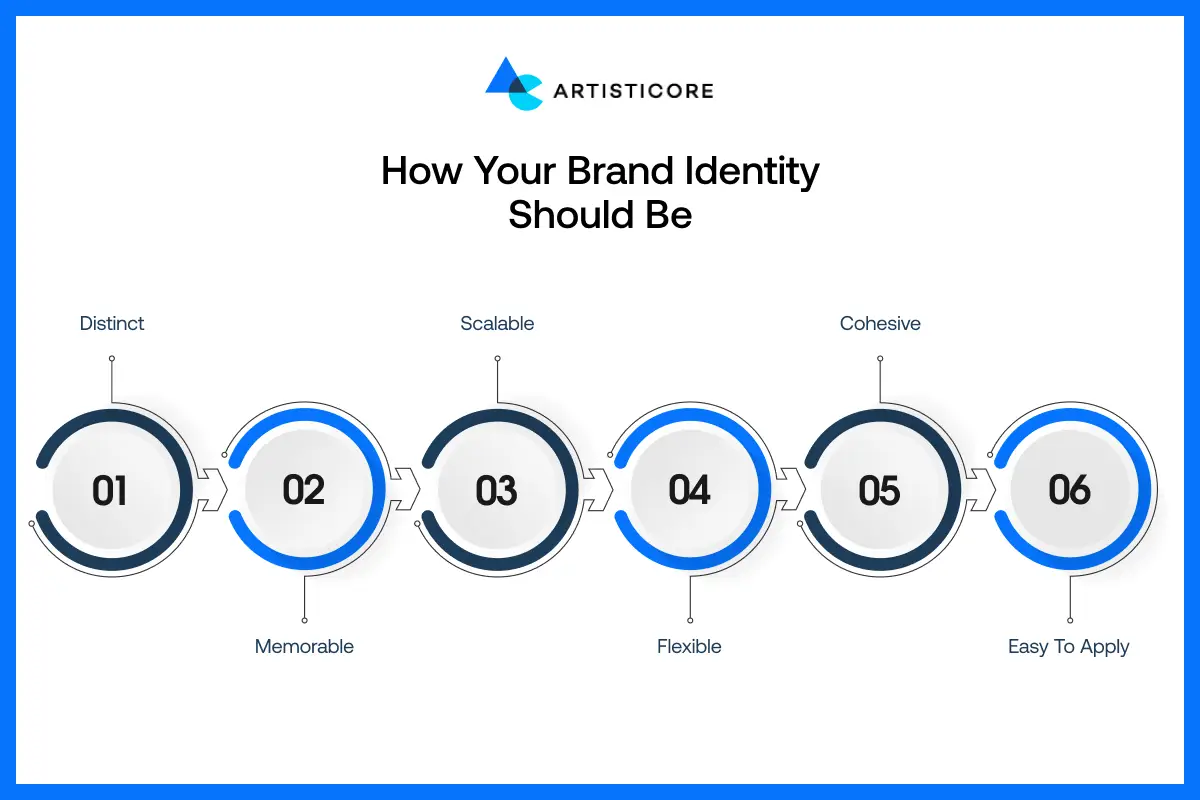
A good brand identity is not just about looks; it’s about how well it works in the real world. Here’s what makes a strong, effective brand identity:
Distinct
You want your brand identity to stand out from others. Being distinguished means you have a distinct look and voice from your competitors. It might be your logo, colors, or tone. But the point is that you want to make it clear how unique your brand is.
This allows people to differentiate between you and your competitors. Also, it helps them remember your brand.
Memorable
People remember a powerful brand identity strongly. Your logo, colors, and even the way you speak should all be memorable.
Simple, branded, and well-thought-out designs are more unforgettable. The more your brand is a memory, the more customers can easily recall and trust you.
Scalable
The visual aspect of your brand identity should be attractive no matter the case, starting from tiny social media icons to huge billboards.
The scalable brand identity also means that all your components of a brand identity can fit anywhere at any time. More so, they must be made in all sizes. This will make your brand look professional everywhere.
Flexible
While consistency maintains a significant role, the brand identity still has to be adaptable. The identity should not only be flexible but should also be able to break through the new channels, campaigns, or styles while still keeping the brand’s essence.
Making your brand identity flexible allows your brand to stay fresh. More so, it can do so while remaining consistent with the values and message of the brand.
Cohesive
Every element of your branding has to work cohesively together. This means your logo, font, tone, and visuals should all be on the same page.
Cohesion leads to recognition and trust-building. When all the elements are using the same style and message, your brand looks organized, professional, and identifiable anywhere.
Easy to Apply
Your brand messaging must be easy for anyone to use on your team, especially the new members.
Clear brand guidelines on how to use logos, brand colors, and fonts help maintain simplicity.
The more user-friendly it is to apply your brand elements, the easier it is when people are using them in content they create consistency.
It doesn’t matter if the content is created by you, your business partner, or an independent contractor; your brand elements will bolster the credibility of that assignment and its familiarity to potential clients.
How to Create a Brand Identity
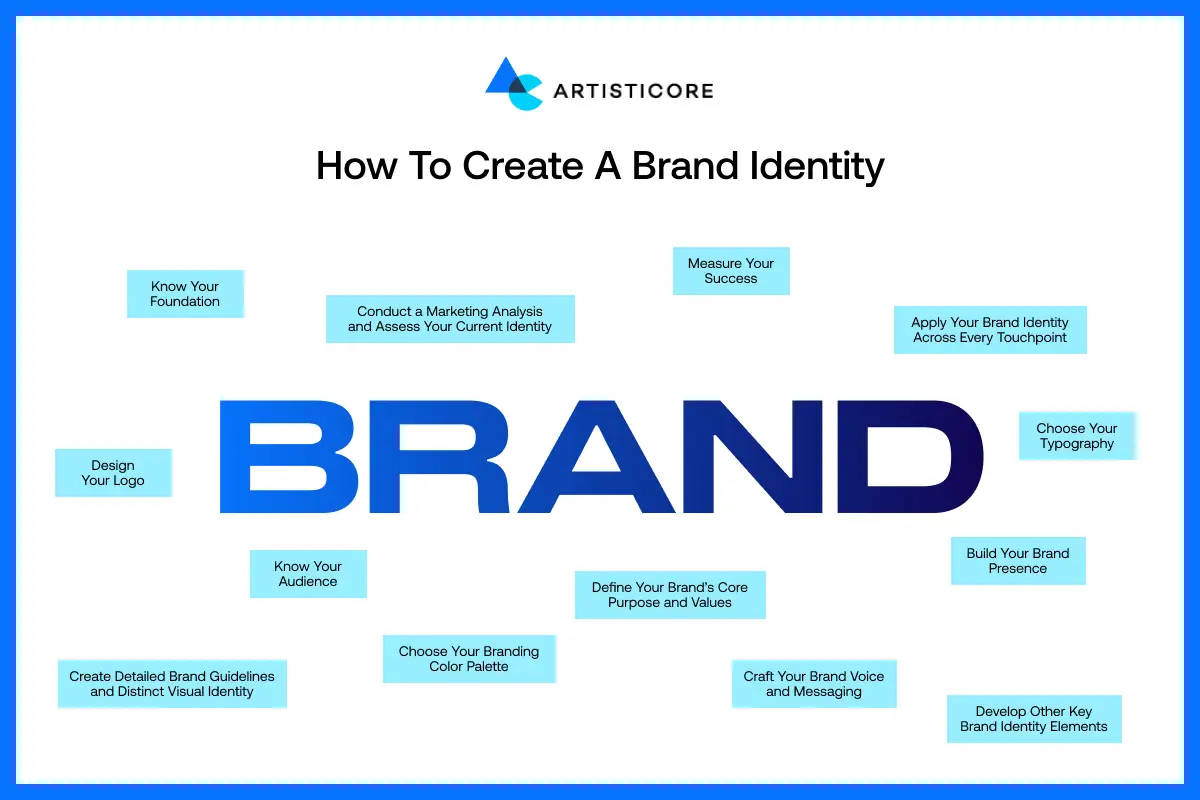
Brand building is something that takes both time and effort to establish. But it is actually built upon understanding the brand’s values, images, and representations. Here are the steps to your personal brand identity:
Know Your Foundation
Nothing should be designed until a thorough understanding of the brand is achieved. Before you begin the brand design process, uncover your purpose, what you wish to attain, and what your main objectives are.
Put simply, consider the very reason for your brand’s existence and the issue it aims to resolve. This brand identity process of reasoning will be your compass and will ensure you stay focused, providing you with a cutting-edge clarity for all your design decisions. This base makes your brand identity believable and strong, and helps it last.
Conduct a Marketing Analysis and Assess Your Current Identity
The next step in the brand identity design process is to know what is your brand identity right now.
More so, you will need to take a look at your brand’s current position and that of the competitors. Identify the strong and weak points.
Deliberate the strengths and weaknesses of your brand and its consumers’ views about the brand. This usually helps to pinpoint the market niche where you can place your brand in a way that is both unique and acceptable to the consumers.
Define Your Brand’s Core Purpose and Values
To build a good brand design, you gotta know what you’re about and stick to your guns. Your brand comes from what you believe in.
And your values? They’re just the rules you play by when doing business. That’s the core identity of a brand.
The entire purpose of these things is to evoke emotions in people when they associate you with the brand and guide you towards making the right decisions that correspond with your brand values.
If the people understand your message, then they will trust you and stay with you.
Know Your Audience
It is essential to know about your customers. Who are they and what do they like? Are they a young audience that likes cool designs? Or are they brands that like sleek designs?
A brand identity can be altered to reflect the distinct interests and tastes of core target audiences.
Create Detailed Brand Guidelines and Distinct Visual Identity
Brand guidelines serve as a reference for your identity. They outline how to use your logo, colors, and image constantly.
This maintains your brand’s consistency throughout your site, package, and marketing materials.
A well-defined visual identity not only guarantees that your company is instantly recognized but also portrays it as more reliable and professional in all the various branding contact points.
Design Your Logo
The logo of your brand is a major component of your brand identity. Therefore, it can very shortly and indelibly communicate the essence and nature of the brand.
Think about the colors, the forms, and the icons that are your narrative. Your logo will be the one that the world hears your identity and your values through, whether your brand is contemporary, fun, or classy.
If you have your own brand identity designers, then you can have them create your logo. And if not, then you can consider hiring corporate identity designers for logo design.
Choose Your Branding Color Palette
The color of a brand does have an effect on people when it is seen. Choose a color palette that best reflects the personality of your brand. Think of color psychology and how it works on people. Blue is linked with a feeling of calm. Or red means energy. Likewise, black stands for minimalism.
Each color should be picked with a thought. Also, the colors should fit well within your brand design.
Keep your main color and supporting colors to a minimum. Avoid using too many colors. Using a few colors will create a polished look across your brand.
Choose Your Typography
The selection of a typeface is not simply a matter of choosing a beautiful one; letters are the most important way to show the brand’s particular character.
It is a must to opt for the most legible fonts as well as the ones that will be constantly used. For instance, a brand development design might go for huge fonts.
On the other hand, a classy brand might go for a beautiful serif font as part of its branding and visual identity.
As a rule, the limit is two or three fonts at max for titles, subtitles, and body text. This is to avoid making your designing branding clutter.
Develop Other Key Brand Identity Elements
In addition to your logo and colors, other brand identity design pieces help to bring your brand to life.
These are photography, brand strategy graphic design, illustrations, and project images demonstrating your brand’s personality at work.
Each designed piece should tell a story and feel adjacent to your brand’s tone and purpose to represent your brand to your audience.
All of these brand design elements help your brand be easily recognized and connected with your audience. This is what branding in design is all about.
Craft Your Brand Voice and Messaging
Brand voice can be defined as the way you communicate to your customers and followers through text. It reflects the style, tone, and emotions that you want to convey.
Do you want to sound more friendly and approachable? Or do you want it to be more formal? Once you know the voice you want for your corporate identity brand, you will need to use the same voice across all platforms.
In such a case, your audience will get the right impression of you. More so, they will be defining product identity. Also, it will show your identity designed with a brand voice that goes along with your brand by design.
Apply Your Brand Identity Across Every Touchpoint
The moment you finish building up your brand identity, you will have to apply the graphic design corporate identity all over your media.
This means applying branding for graphic designers, such as the logo, colors, fonts, and tone of brand voice, to your platforms.
How you apply your graphic designer brand identity will do justice to the brand design development you went through.
Your brand’s designer branding looks and emotions should be expressed in every interaction you have with your audience.
This way, you will be recognized more and trusted by using the brand identity deliverables across all your platforms.
Build Your Brand Presence
Brand identity is not just a one-time branding design process; it is a commitment to continuously portray with visuals the brand’s personality and image.
This means that the logo, colors, fonts, and tone of voice should appear on the website, packaging, social media, and even in the manner of customer communication.
Each and every interaction with the audience should reflect the look and feel of the brand at that moment.
The more you are consistent in all your communications, the more your brand will be acknowledged and rely on trust.
Measure Your Success
After you have created your brand identity, you need to monitor its performance. You must notice how people react to your brand through polls and feedback.
Then decide which communication is the most engaging by tracking sales, customer reviews, and customer comments.
Also, if something is not quite right, do not hesitate to change it to find the right one that you can work with.
Monitoring success allows you to continue refining your logo and brand identity, and making it a creative brand identity.
3 Brand Identity Best Practices Your Brand Needs to Follow
Once you’ve built your brand identity, the next step is maintaining it. These best practices help keep your brand strong, consistent, and ready to grow as your business evolves.
Be Consistent Across Touchpoints
Brand consistency is among the best brand design tips for achieving recognition and trust. Also, remember your design identity must have a consistent feeling, voice, and look in all channels.
Your branding corporate identity needs to be the same on your site, social media, and ads. When clients come across a message and design for branding, they will associate it with your brand.
As a result, this not only earns loyalty but also gives your company a good and trustworthy design and brand. This is what is a brand design is in essence.
Update and Refresh Your Brand Over Time
Your brand does not have to stay the same. Brands transform all the time when the need for doing so arises. This is due to changes in culture, trends, markets, and consumers. All of this contributes to the transformation of your brand. This way, you can keep it fresh and up-to-date.
However, this is not the case of going back to the very beginning in branding and corporate identity.
You can make minor alterations to your brand in design. This includes a new logo brand identity, different colors, or a slight change in the message that can work miracles.
Being open to changes shows that your brand can adapt to the present without losing its core brand identity.
Use Guidelines for Scalability
Brand guidelines are your rulebook for your brand. They make sure your brand identity layout stays consistent even when your brand grows.
They define how to use your brand layout, logo, color, font, and imagery in all brand designing and across all channels.
Simple guidelines make scaling easier by making your product identity cohesive and strong, no matter who is creating your content or where it is published.
4 Inspiring Brand Identity Examples to Take Notes From
Some brands have mastered the art of identity so well that they’ve become global icons. Let’s look at a few examples that show how strong corporate identity branding builds lasting connections:
Apple
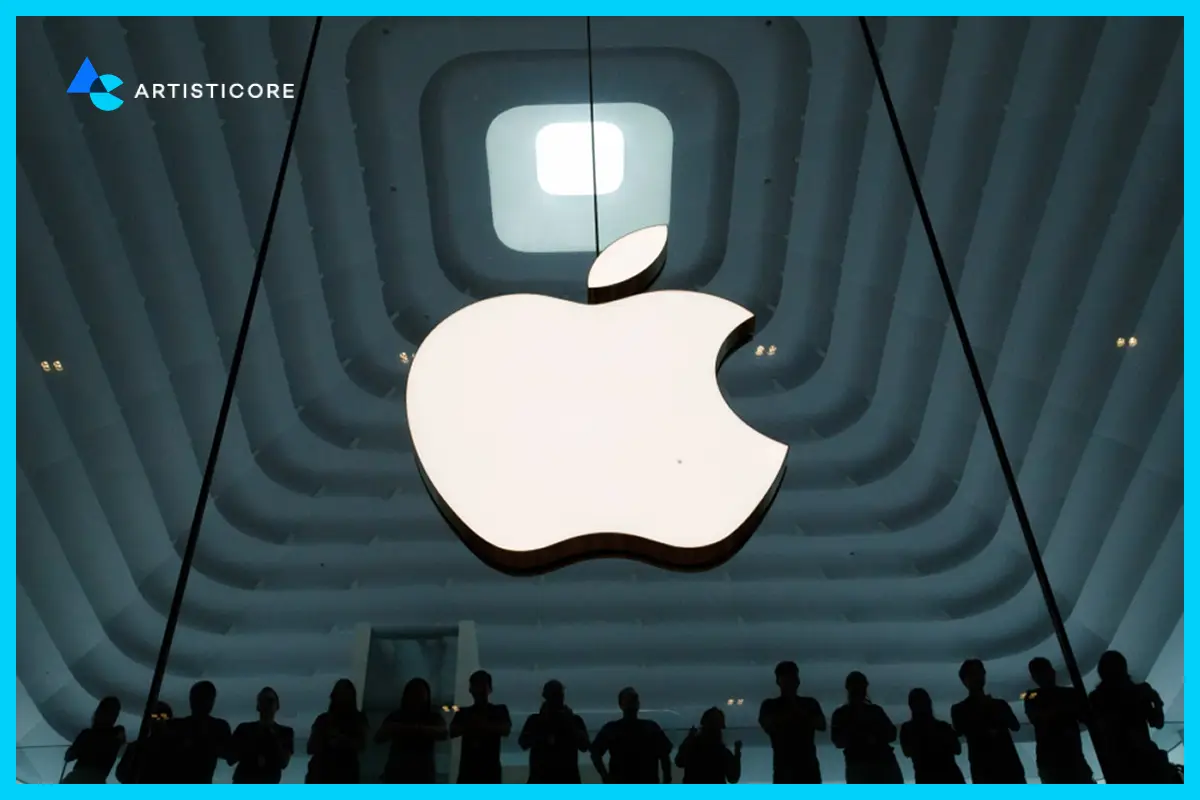
Apple has set the standard on what is branding identity. The essence of Apple as a brand is simple and innovative.
That is why its plain and basic visuals, consisting of little color and simple forms, represent the beauty of the latest technology.
The company’s logo and the manner in which the company communicates through advertisements, packaging, and products are the factors that make the company easily recognizable.
Apple has shown the world that a strong and lasting identity can be built through simplicity.
PlayStation
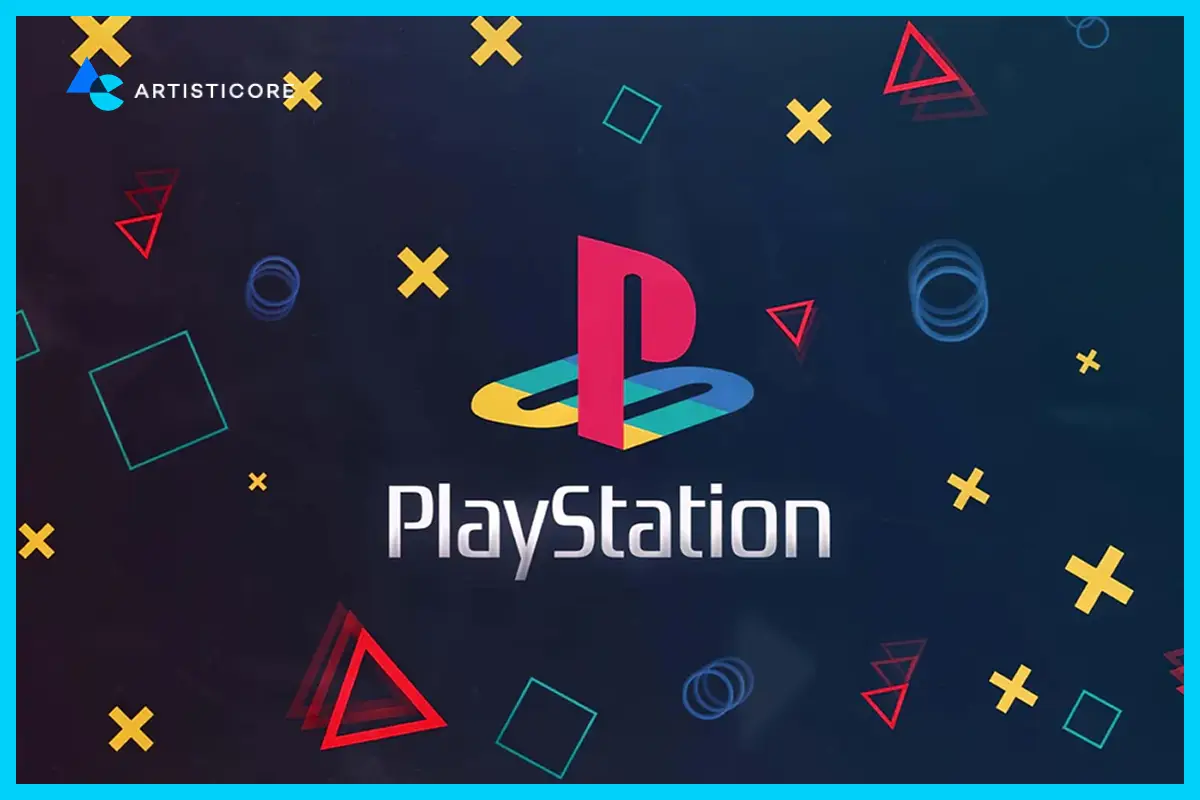
The PlayStation brand is all about fun, excitement, and games. Its vibrant logo, playful sounds, and colorful visuals appeal to gamers of every generation.
The whole company shines with great adventures and fantasy from the console’s presence to the advertising campaigns.
PlayStation does a lot more than sell products. It creates happy memories and bonds through gaming experiences. This allows the brand to develop customer loyalty through storytelling and design bits.
Ferrari
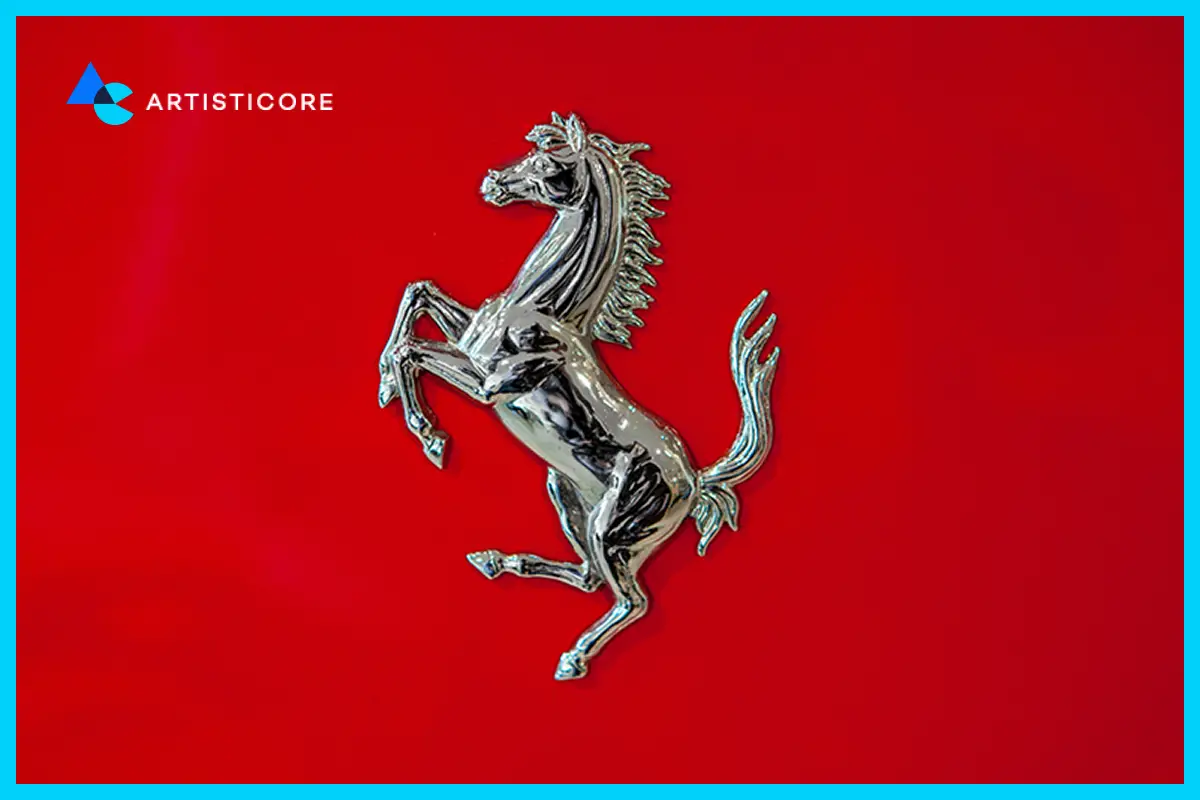
Ferrari is synonymous with luxury, performance, and prestige. Its red color is iconic in every facet.
The logo of the prancing horse is a piece of art that represents luxury at its best. More so, the smooth design in branding is all representative of speed and perfection.
Ferrari’s image is loved by every car enthusiast. And that image is driven by its cars, from their curves, and is shown in its branding and design.
Ferrari illustrates that the power of corporate brand design and emotion combined can turn a brand into a symbol of triumph and love.
Make Unforgettable First Impressions With a Brand Identity! Let Our Team Bring Your Brand to Life.
LEGO
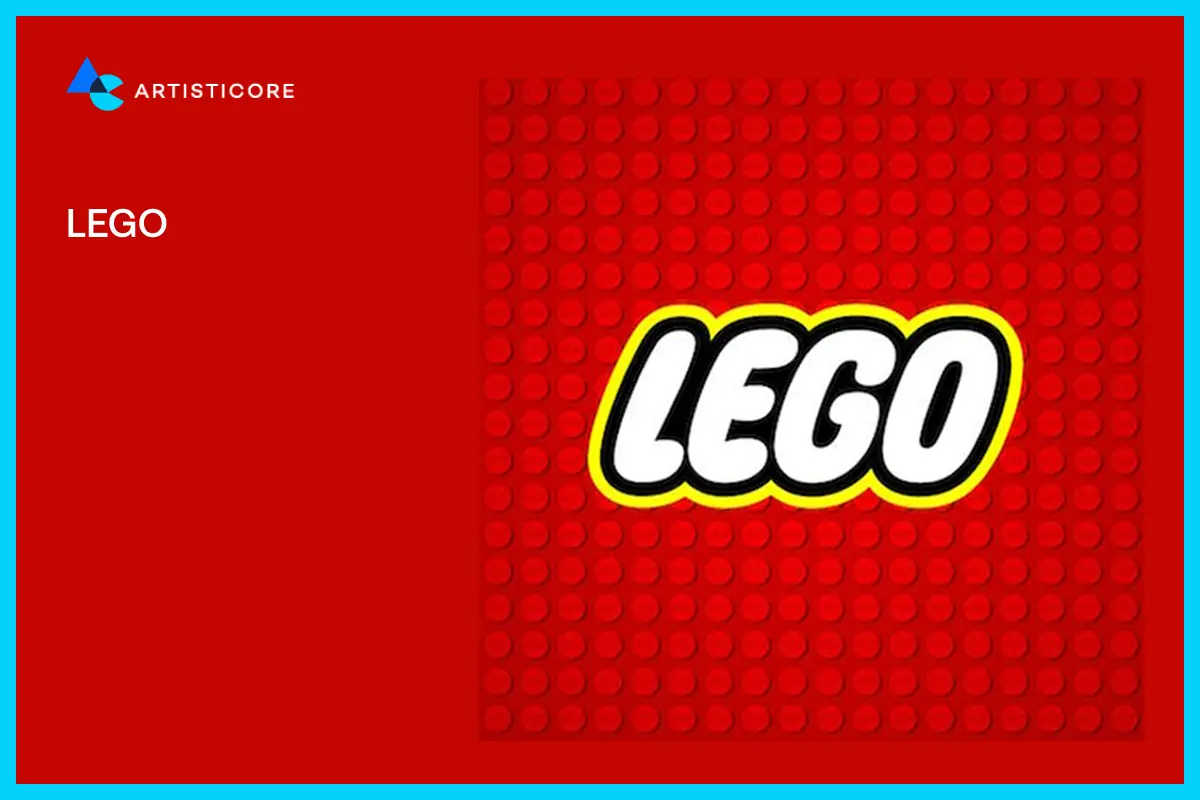
LEGO is the definition of brand identity done right. It is the brand identity definition of something that is delightful and playful.
The very playful and eye-catching, colorful, and simple toy in the form of blocks is a source of delight for both kids and grown-ups all over the world. The slogan of the firm is one that promotes constructing, learning, and narrating.
LEGO’s playful yet profound style makes it ageless and applicable to every generation, proving that a strong identity design based on joy and creativity is always in vogue.
Get Started With Artisticore to Craft a Brand Identity that Lasts
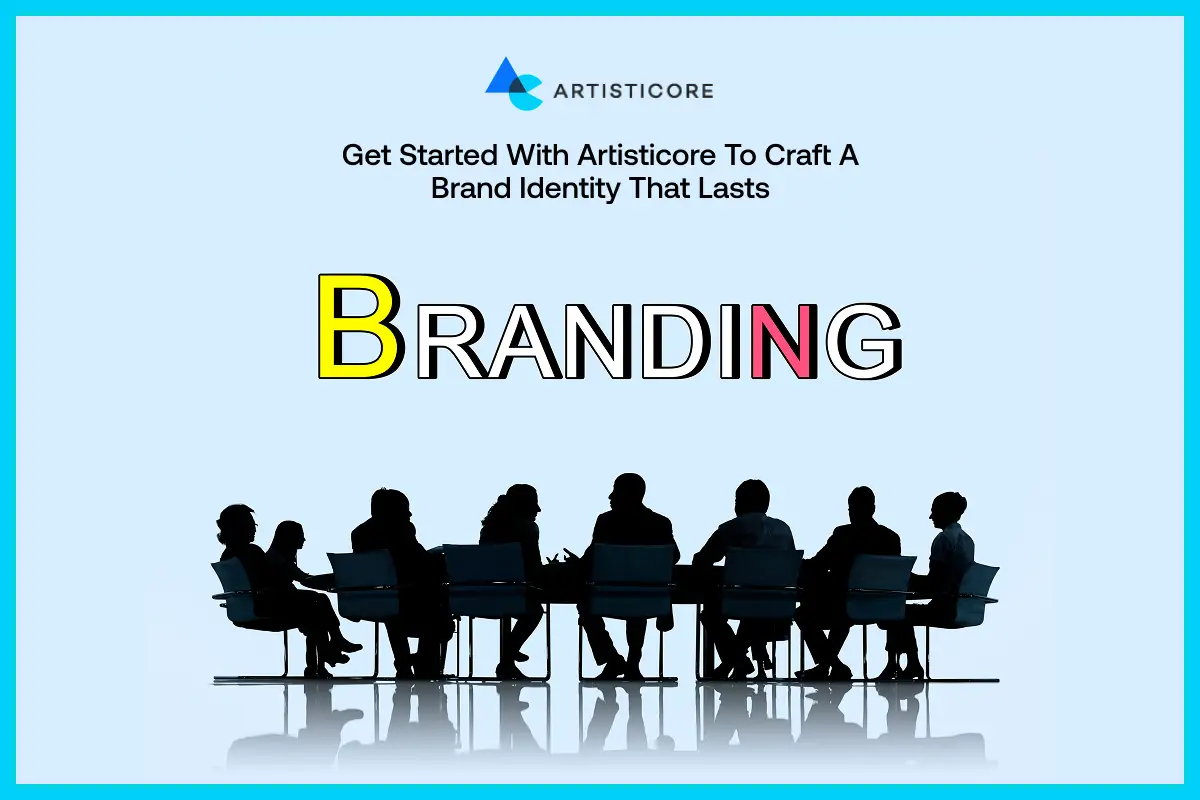
Creating a brand identity isn’t about coming up with a logo or selecting colors. Instead, it’s about defining how people look at your brand and remember it.
That is why Artisticore knows what is brand identity design and how to design a brand. They are an expert in designing brand that lasts.
We will create your branding visual identity with our Logo Design and brand identity services. More so, our brand identity designer will explore your past, values, and clients to create a brand identity portfolio.
From the logo and colour palette to the voice and imagery, every single part of corporate identity and branding will be crafted to be your mirror.
So, partner with Artisticore, and create a brand identity that is timeless, communicates, motivates, and grows with your business.
Final Thoughts
So, there you have it, folks, that is the end of this, creating a brand identity a guide for designers. We discussed what is branding design, and how you can create a corporate brand identity design with brand guide design tips. As you know, your corporate identity designs are like the heartbeat of your business. Your logo and identity design are what the people experience, see, and remember about you.
Every aspect, from colors and logo to voice and image, is combined to narrate your story. However, you must remember that brand identity and logo design are not a one-time job. Instead, it is an endless cycle of keeping designs for brands updated. And if you need graphic identity and branding corporate identity design, then you can consider Artisticore for the job. Artisticore could turn your idea into a designing brand identity that outshines the rest and will last for many years.
